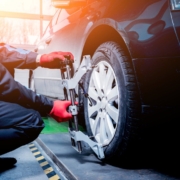How Incorrect Tyre Pressure Can Harm Your Car
Tyres are the only part of your car that actually touches the road yet they’re often one of the most neglected components when it comes to maintenance. One of the easiest ways to keep them in top condition is by maintaining the correct tyre pressure. Sounds simple, right? But driving with tyres that are either underinflated or overinflated can have serious consequences for both your car’s performance and your wallet.
Why Tyre Pressure Matters
Correct tyre pressure isn’t just about avoiding a flat it’s about safety, comfort, and efficiency. Every vehicle has a recommended tyre pressure, usually found in the owner’s manual or on a sticker inside the driver’s door. This number is carefully calculated to give you the best balance of grip, handling, and fuel economy.
If you’re driving on Bridgestone UAE tyres or any other premium brand, keeping them at the right pressure ensures you’re getting the performance they were designed to deliver.
The Risks of Underinflated Tyres
When tyres are underinflated, more of the rubber makes contact with the road. While that might sound like better grip, it actually causes:
- Excess heat build-up – which can lead to blowouts.
- Increased rolling resistance – making your engine work harder and burn more fuel.
- Uneven wear – especially on the outer edges, shortening tyre life.
Over time, these issues don’t just damage your tyres they can affect suspension components and steering performance too.
The Risks of Overinflated Tyres
Overinflated tyres have the opposite problem. They bulge in the middle, reducing the contact patch with the road. This results in:
- Reduced grip – especially in wet conditions.
- Harsher rides – every bump and pothole feels worse.
- Faster centre tread wear – meaning you’ll need replacements sooner.
It’s a false economy you might think you’re saving fuel by reducing rolling resistance, but you’re actually compromising safety and tyre longevity.
How to Check and Maintain Correct Pressure
Keeping your tyres healthy doesn’t require a mechanic you can do it in minutes:
- Use a reliable tyre gauge – Digital gauges are often more accurate than analogue ones.
- Check when tyres are cold – Heat from driving can increase pressure readings.
- Follow the manufacturer’s recommendations – Not the number on the tyre’s sidewall (that’s the maximum).
- Check monthly – And before long trips.
Final Thoughts
Incorrect tyre pressure might seem like a small oversight, but it’s one of the fastest ways to wear down tyres and harm your car’s overall health. A few minutes with a tyre gauge can save you from costly repairs, poor fuel economy, and potential accidents. Treat it as part of your regular driving routine your car, your tyres, and your wallet will thank you.

